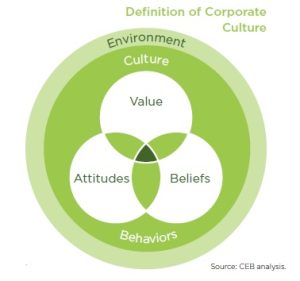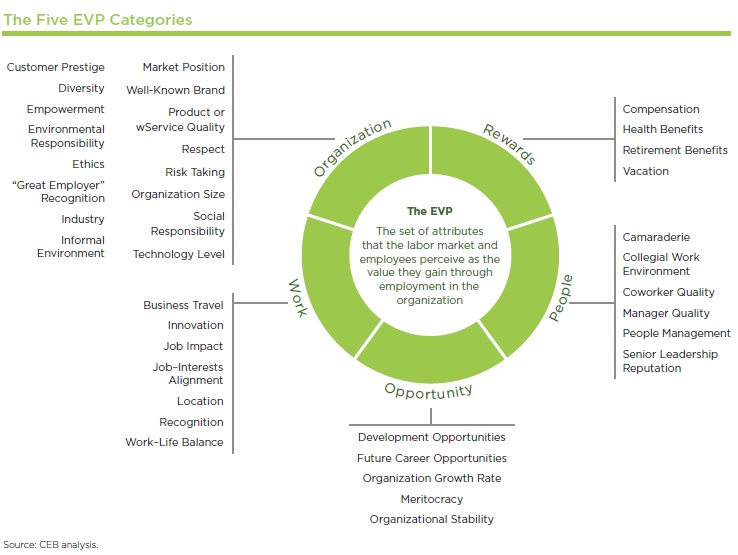You probably know how the story turned out in “The Tortoise and the Hare.” The popular children’s tale shows a slow, purposeful tortoise unexpectedly outrunning a speedy, boastful hare, championing the message of “slow and steady wins the race.”
But CHROs can’t be leisurely with cultural integration during M&A. In 2015, M&A deal values hit an eight-year-high, but HR executives say only 37% of M&A succeed. For an M&A to excel, organizational cultures need to be effectively integrated. This puts HR under increasing pressure to quickly get cultural integration right.
Cultural integration is slow by definition
The challenge here is that organizational cultures are difficult to change and integrate, by their very nature. These cultures are the shared values, beliefs, attitudes, and behaviors of an organization and its employees. They are enduring and broad, and they permeate processes, behaviors, and structures in many ways.
Starting earlier isn’t the answer
Ideally, HR is involved in the earliest stages of the M&A process to get a head start on cultural integration before the deal is finalized. In reality, only 34% of HR functions are involved early.
But even with timely HR involvement, assessing the target organization’s culture is complex and slow. Truly understanding the values, beliefs, attitudes, and behaviors of a workforce requires a set of activities that can take several weeks to many months to perform. These activities can include employee surveys, focus groups, leader and customer interviews, reviews of HR policies and practices, and evaluations of compensation and benefits plans. The speed of M&A and the inaccessibility of this information typically obstruct an in-depth culture assessment.
Move fast in the first 120 days of M&A integration
In the newly formed enterprise following M&A, every employee plays a critical cultural integration role, even if they don’t realize it. The organization’s culture is shaped and transformed by the collective actions of each individual employee.
How can organizations encourage employees to act differently—in the best interests of the newly formed organization—from the very start of the M&A deal? The challenge appears daunting, but by following the steps listed below, HR executives can move quickly to jump-start cultural integration in the first 120 days of an M&A—acting as the tortoise and the hare.
1. Use the EVP to pinpoint which specific cultural attributes to prioritize and merge.
 Newly merged organizations often establish their cultures by (re)defining their new values, mission, and vision and by communicating that information through a top-down cascade. Although important, communicating this common vision doesn’t sufficiently help employees change their behaviors and how they perform their work. Values, for example, are far too vague and difficult to translate into specific and relevant actions across the workforce.
Newly merged organizations often establish their cultures by (re)defining their new values, mission, and vision and by communicating that information through a top-down cascade. Although important, communicating this common vision doesn’t sufficiently help employees change their behaviors and how they perform their work. Values, for example, are far too vague and difficult to translate into specific and relevant actions across the workforce.
Fortunately, HR can use the employment value proposition (EVP) framework to quickly uncover each culture’s strongest aspects and objectively assess which aspects to retain and emphasize in the new organization. Specifically, the function can gather employees’ feedback from both organizations (about how important they see different attributes and where they think the organization excels) and then use that feedback to identify specific actions that everyone in the organization can take to start “living” the new culture. (To gather employee feedback, use our EVP framework and attributes, depicted below, or a custom set of attributes. When using a custom set of attributes, develop a comprehensive list that represents the current EVP attributes of both the acquiring and acquired organizations.)

To collect feedback, ask all employees to (1) rank the importance of each EVP attribute and (2) rate their satisfaction with each attribute. Then, for each organization, collect the feedback and compare the aggregated results, attribute by attribute, to learn which are important to both organizations.
Once you have prioritized the attributes, partner with employees from both organizations to identify ways they can improve on the attribute and create a shared culture. Using the EVP attribute of “manager quality” as an example, work with managers to brainstorm and implement ways to nudge them to be better as managers. Scheduling weekly check-ins between manager and direct report, for instance, is a simple, specific action that managers can take to quickly start integrating culture.
When comparing each attribute’s importance (to decide which ones to hone during integration), consider the following:
• Start with attributes with high importance and low satisfaction for both organizations. These EVP attributes are an obvious opportunity to improve in a way that appeals to employees from both organizations and to create a shared, integrated culture.
• Proceed carefully for attributes of high importance and high satisfaction to one or both workforces. When at least one workforce is satisfied with the attribute, changing it may cause more harm than good. Learn more about the attributes’ similarities before proceeding. If there is a mismatch in satisfaction levels and the attributes are dissimilar, there may be opportunity to improve attributes for one workforce to further integrate cultures.
• Refrain from “improving” attributes of low importance, regardless of satisfaction levels. If leadership thinks an attribute is important but it isn’t particularly important to the workforce of both organizations, leave the attribute as is even if satisfaction is low. Improving it won’t have much impact on your ability create a strong, shared culture in the near term.
2. Change employee mind-sets to focus on the entire enterprise.
Another barrier to behavior change is siloed mind-sets. Employees up and down the newly formed organization often still view their work from the perspective of their original organization. Even if frontline employees support the M&A, past perspectives and knowledge still shape their perceptions and actions. This barrier extends to leaders as well. More than half of heads of HR express a high level of concern about fixed leader mind-sets. To encourage employees to change their behaviors and actions in a way that supports culture integration, CHROs must also change their perspective.
Fortunately, HR can act quickly. Rather than attempting to convince employees that the M&A is beneficial for all involved, HR can help employees discover for themselves the value of the M&A and their role supporting it. Specifically, encourage employees to consider three questions:
- How does this M&A benefit both organizations? What will my organization—and I—get that we wouldn’t otherwise? What does the new organization get that it wouldn’t otherwise?
- What must I do differently in my role to make sure everyone, especially the other organization, receives value?
- How will I know that both organizations are getting value from the M&A? How will I know that I’m bringing value to the other organization in some way?
Simply asking these questions won’t lead to change overnight, but asking early and will often generate dialogue and jump-start a change in employees’ mind-sets. To support the shift, for example, task your HRBPs with leading small group conversations based on the questions, and prepare managers to discuss these questions with their direct reports in their regular one-on-one check-ins. Further, help managers embed these questions into career pathing and development conversations by updating career conversation guides or reserving time in weekly team meetings to discuss the M&A.
3. Use social networking to break down horizontal communication blockades.
A third barrier to effective behavioral change during M&A is horizontal communication blockades. CHROs repeatedly tell us about the importance of communication in M&A, and research confirms this. Data released by McKinsey & Company in 2015 finds that, of 24 actions used to support change, communication-related actions top the list in terms of their impact on the likelihood of a change’s success. 1
A common approach to managing communication during M&A is top-down cascades. Although top-down cascades can—and should—show senior leadership’s commitment to the M&A and support a common vision, cascades occur within organizational silos and risk reinforcing horizontal communication blockades. When a senior leader announces an M&A to her team of business unit leaders, for example, they then communicate to their middle managers, who then communicate to frontline managers, and then to their individual contributors. The communication cascade occurs within the silo of the existing reporting lines, doing little to help employees understand their new partners and how to work with them.
Luckily, organizations can use simple technologies—that employees already use—to ensure better communication across the newly formed enterprise from the outset of the M&A. Start with user-friendly technologies that are simple yet impactful, and devise plans to integrate all employees onto more complex, sophisticated technology platforms later on. For example, you can create private LinkedIn groups for employees from the acquired and acquiring organization or invite employees from both organizations to follow the organization’s Twitter feeds to increase transparency and communicate common messages. You may even recommend that senior leaders of the new organization set up accounts across the company’s communication tools to update the workforce on the latest happenings before internal systems are fully merged.
Employees increasingly use social networking to communicate and perform work. 78% of millennials use social networking.
43% of CEOs access the mobile web daily using browsers or social apps (including Twitter, Facebook, and LinkedIn).
You can partner now with your peers in IT to determine a plan for the first 120 days (and beyond) to improve communications and information access across the new enterprise and to help employees work together to support cultural integration.
It’s day 121—Now what?
On day 121, gather your executive HR team and key line leaders to review what you accomplished in the first 120 days and what needs to happen next. There’s no one magic metric that will tell you if cultural integration is working, but reviewing your progress against each of the three strategies serves as an indicator. For example, discuss the following as a group:
- Have we identified and communicated specific actions that employees should take to help integrate cultures? Do employees regularly perform these actions?
- Can employees articulate how the M&A benefits everyone and their specific role in supporting the M&A?
- How well do we use technology and social media to support horizontal communication across the organization?
- Overall, what changes are we seeing in how our employees act and work?
- What other opportunities exist to shift employee behaviors to support cultural integration?
Full cultural integration won’t occur in 120 days, but CHROs can get the process off to a fast start. The three strategies above will help CHROs act quickly within the first 120 days, and can also be used to devise a roadmap for the longer term.
Bronvermelding: Auteur: Amanda Joseph-Little Artikelnaam: Be the Tortoise and the Hare
1 McKinsey & Company, “How to Beat the Transformation Odds,” April 2015.


